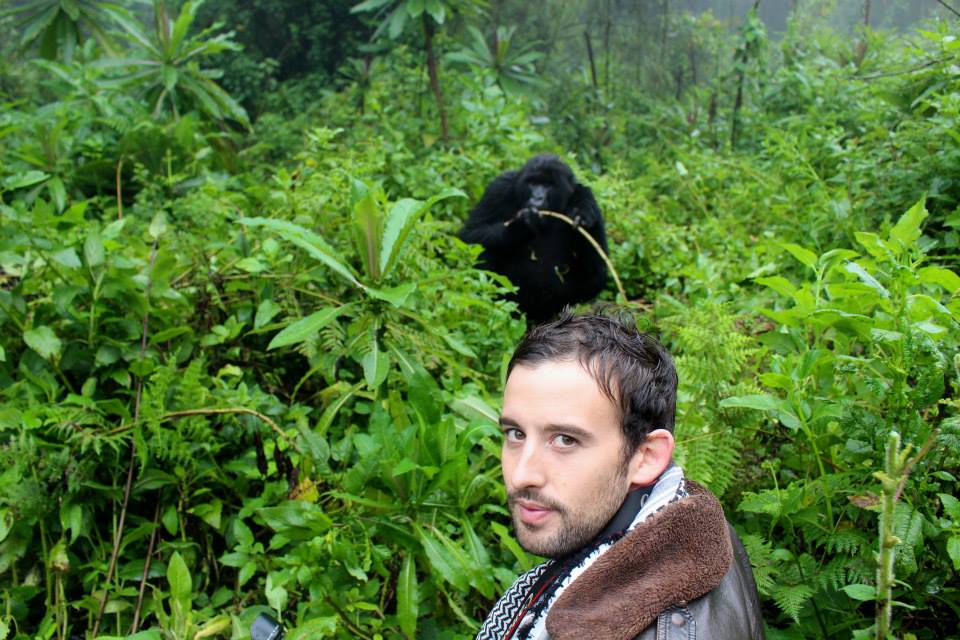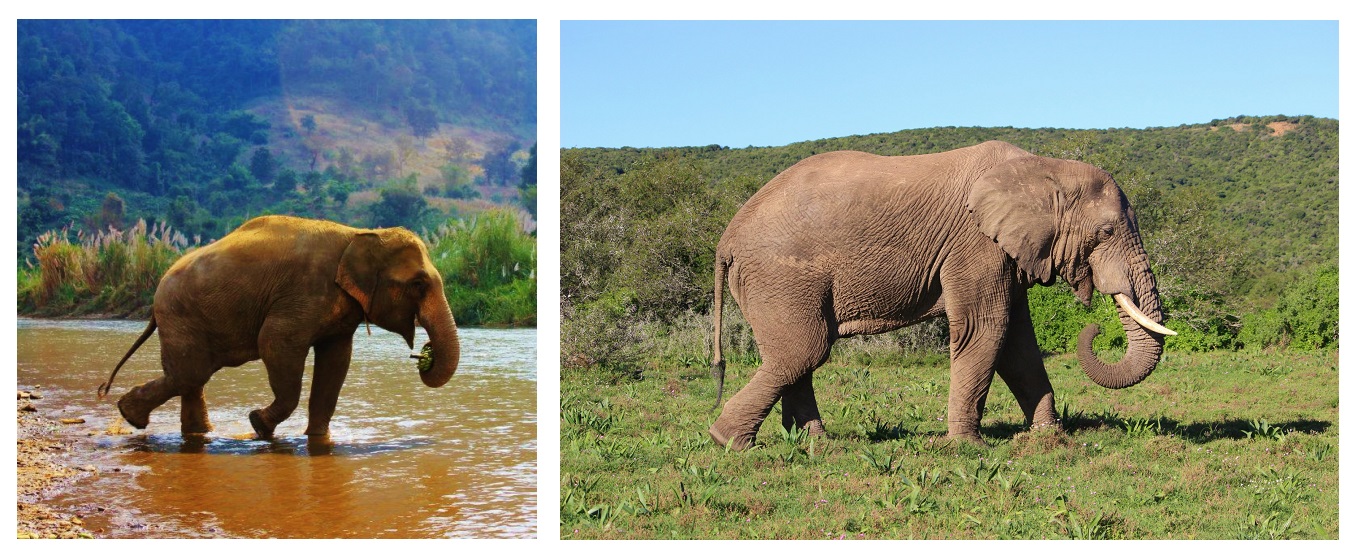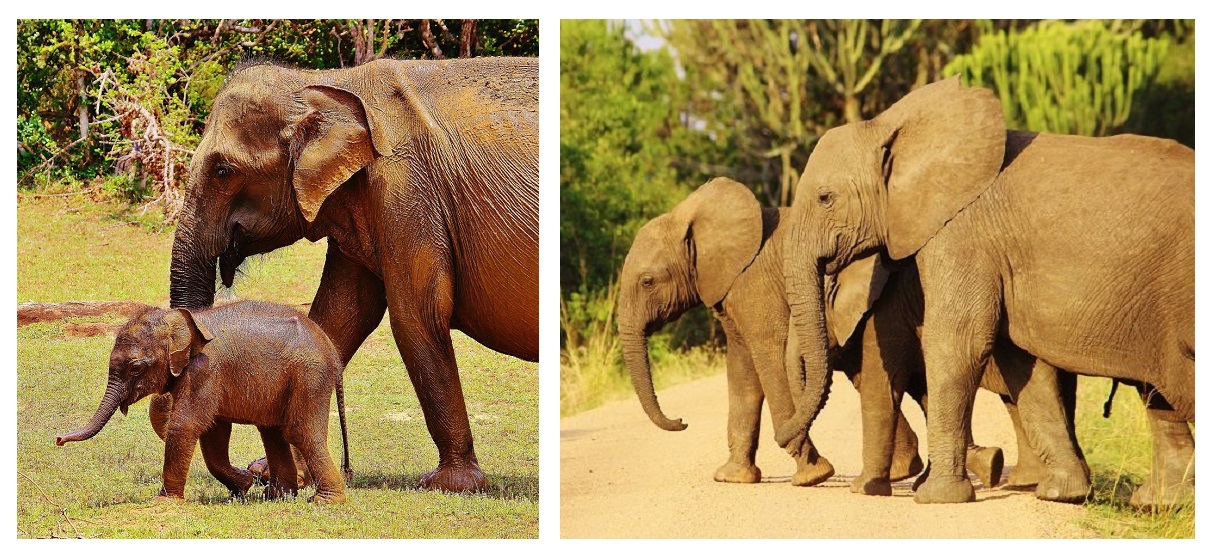I'm often left frustrated by the plethora of images cropping up on social media that display clear acts of animal abuse and exploitation. With the inception of the "selfie" era, many find the opportunity to pose with captive animals too alluring.
It begs the question, do people understand the magnitude of suffering inflicted in order to support some of these wildlife attractions? I have many friends who have participated in unethical wildlife tourism. I know them to be sensible, emotionally intelligent and compassionate people, so I'm frequently left bewildered by the lack of thought and judgement that ensues when engaging in such cruel activities.
To avoid confusion, most animal rights activists consider any animal excluding dogs or cats to be undomesticated. Birds unquestionably don't belong in cages, and common pets like rodents, reptiles and fish would surely prefer a life of freedom over the confinements we increasingly impose upon them.
It has been scientifically proven that many animals - not just limited to primates and other large mammals - exhibit traits similar to that of humans. Some are considered to be highly sentient, demonstrating familiar characteristics including self-awareness, self-consciousness, and even empathy. Many species have also been well documented for their capacity to form highly complex social structures. In fact, most, if not all animals that are pressed into service for the "entertainment" of humans possess these exceptional cognitive abilities.
Contrary to apparent belief, a four-tonne Asian elephant would rather spend time foraging with its family in the rainforest than trudge around each day with tourists strapped to its back. Lion and tiger mothers prefer not to be parted with their one-month old cubs for the sake of tourists receiving a few extra Facebook likes.
Practicing responsible wildlife tourism is actually quite easy. All you have to do is ask yourself one simple question. Given the choice, is it likely that the animal would comply with the activity? If the answer is yes, you are probably petting a dog or cat. If the answer is no, then ask yourself if the short-lived experience and social media attention is worth the animal's lifetime of suffering.
As an animal enthusiast and professionally certified safari guide, I can assure you that nothing trumps a purely authentic encounter with wildlife. Observing animals where they belong is a far more rewarding experience, not least because they are behaving and interacting with their environment as nature intended them to.
The following are among the cruellest, yet most popular wildlife attractions one must avoid to consider themselves a responsible tourist.
Elephant Riding
As young as four years old, infant elephants are separated from their mothers to undergo a severe, almost humiliating taming process. The young calf is confined into a small space and held tightly in place using constricting ropes and chains. The procedure involves physical torture including poking and prodding with sharp implements such as knives, bullhooks, and bamboo sticks with nails embedded in the end. Other methods include food, water, and sleep deprivation. The elephant must endure this until the persecutor senses that it has become submissive enough to work with humans.
Almost all domesticated elephants – whether rode whilst trekking, performing tricks or street begging – must endure this gruelling ritual. It’s an unpleasant reality unbeknown to the majority of tourists who arrive in countries such as Thailand, India, and Malaysia.
The elephants may seem at peace, but that's only because their spirit has been broken. When given a break from their arduous duties, their physical and psychological wellbeing is further crushed by unfavourable living conditions and limited social interactions with one another.
Lion Walking
Lion cubs are purposefully bred for this growing industry and are typically taken away from their highly distressed mothers within a month of birth.
Most walking with lions experiences are available to tourists holidaying in South Africa. Visitors can also expect to handle young cubs for hours on end, with the opportunity to pose with them for souvenir snaps. Many providers encourage their clients to smack the cubs if they display aggressive or any other form of unwanted behaviour.
When they become too old to tame, the lions face either a miserable lifetime in captivity or they are handed over to the canned hunting industry. For those who are unaware, canned hunting is similar to trophy hunting, only the victim is barbarically confined into a smaller area to ensure 100% kill rates.
Tiger Selfies
Thankfully, this industry has recently been exposed for the vile practices that ensued at Tiger Temple in Thailand.
Many of these centres misleadingly pose as wildlife sanctuaries, but have been discovered covertly acting as tiger farms. Large profits are made from illegally selling tigers or tiger parts used in traditional Chinese medicine or as status symbols.
Similar to the walking with lions industry, tiger cubs are parted from their mothers and reluctantly made to pose with tourists for "selfies". It is widely believed that many, if not all tigers are heavily sedated to reduce risks of attack, and any animals acting unfavourably are often disciplined with physical assault.
If that weren't enough, the animals are constricted by short chains or confined in very small enclosures with hard concrete floors.
Dolphinariums
Another highly unethical industry that has been exposed mostly thanks to the incredible animal rights documentary, Blackfish.
Millions of tourists flock to destinations like Sea World and Discovery Cove each year. Most are entirely unaware of the abuse inflicted on these highly intelligent and socially complex creatures.
The animals are often captured from the wild where they are chased down by boats and then hauled on board. The stress induced by this traumatic event is often too much for the animals to endure, and consequently they perish during transit to their intended destinations.
Those selected to be kept in dolphinariums are subjected to a lifetime of suffering. The area in which they have to swim is barely larger than a swimming pool, which is far smaller than their natural sea environment. Furthermore, the pools where they are held captive are regularly treated with chlorine which can lead to painful skin problems and eye irritations. Other health concerns include sunburn and stress-related illnesses including heart attacks and gastric ulcers.
Zoos
In an animal activists ideal world, all wild creatures would be left to live happily in the natural environments they have evolved perfectly well to survive in.
Zoos are a topic of hot debate which I will be writing a future article on. To be brief, some zoos are what I'd call "tolerable", with others being outright evil.
A "tolerable" zoo is one that serves more as a non-profit educational sanctuary. They exhibit vulnerable and endangered species which serve as ambassadors to help promote and support conservation. I use the word "tolerable" because these animals can still suffer from relentless boredom, loneliness, and in some cases, "zoochosis".
If you've ever been to a zoo, wildlife park, or drive-through safari, you may have noticed animals rocking, swaying, or pacing endlessly. Some may even resort to self-abuse, chewing on their own body parts and removing fur or feathers. These are classic signs of "zoochosis" which is caused by the deprivation of diversity and freedom endured whilst living in zoos.
Bad zoos exist entirely for profit. They are located mostly in poorer countries, with animals often kept in tiny enclosures with horrendous conditions. They'll often be terribly malnourished and have contracted diseases or other illnesses that go untreated to limit costs.
Bullfighting
The cruelty administered in this "sport" is merciless and in a so-called civilised age, culture is absolutely no excuse. Every year, thousands of bulls are brutally slaughtered to the cheers of olé in arenas spanning across Spain and South America.
From the very moment the bull enters the ring, they don't stand a chance. Even before the fight they may be weakened by savage beatings. Some will even have petroleum jelly rubbed into their eyes in order to impair their vision.
Typically, when the animals enter the ring they are approached by picadors (men on horses) who drive lances into the bull's back and neck muscles. The banderilleros then enter on foot and proceed to plunge banderillas (brightly coloured sticks with harpoons on their ends) into the bull's back. Finally, the matador appears and tries to kill the disorientated animal with a sword following a few exhausted charges.
The animals rarely receive a clean death, resulting in further mutilation and suffering. If the matador is unsuccessful, an executioner is called in to stab the bull through the spinal cord, and, eventually to death. Even this stroke can be blundered, however, leaving the bull conscious but paralysed as he is chained by the horns and dragged unceremoniously away from the arena.
Rodeo
Countless animals have lost their lives to this "sport". Calf roping, bull riding, steer wrestling, and bronc riding make rodeos nothing more than western-themed cowboy circuses.
Cattle and horses are often zapped with electric shots to encourage them to bolt out from the chute. Young calves' necks are frequently twisted and even broken as they're violently clotheslined and body slammed into the ground.
Fatal injuries including heart attacks, broken bones, and aneurysms are all fairly commonplace, and those who live to see another day are afforded little time to rest or recuperate. They are then hauled off to the next event and repeatedly forced to participate against their will.
When animals are considered too old or worn for rodeo, their next stop is nearly always a one-way trip to the slaughterhouse.
Horse-drawn Carriages
Commonplace in many busy cities including New York, Paris, and Prague, the horse-drawn carriage is just another cruel yet popular tourist attraction that seems to have gone under the radar.
Despite their intimidating size, horses are very sensitive and skittish animals. They are forced to dodge traffic and road accidents have occurred in almost every city in which horse-drawn carriages operate.
With exhaust fumes polluting the city, respiratory ailments aren't out of the ordinary, and debilitating leg problems are often suffered on account of the hard surfaces they're made to toil.
Furthermore, horses are made to pull oversized loads in all manner of weather extremes, and have even been witnessed dropping dead due to heatstroke.
Others Wildlife Attractions to Avoid:
Street Begging and Entertainment
Photo Props
Snake Charmers
Bear Parks
Crocodile Farms
Sea Turtle Handling
Circuses
Racing
Civet Coffee Plantations
Always remember to conduct research and use responsible and trusted tour operators. Never support the use of animals for photographic props and avoid any venues that display captive animals or offer exotic animals on the menu. Lastly, be wary of any attraction where animals exhibit humanised behaviour such as dancing, painting, or other tricks. There are so many ways in which to enjoy wildlife, including safaris, scuba diving, trekking, and much more!











